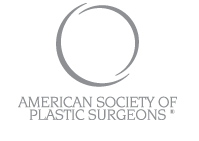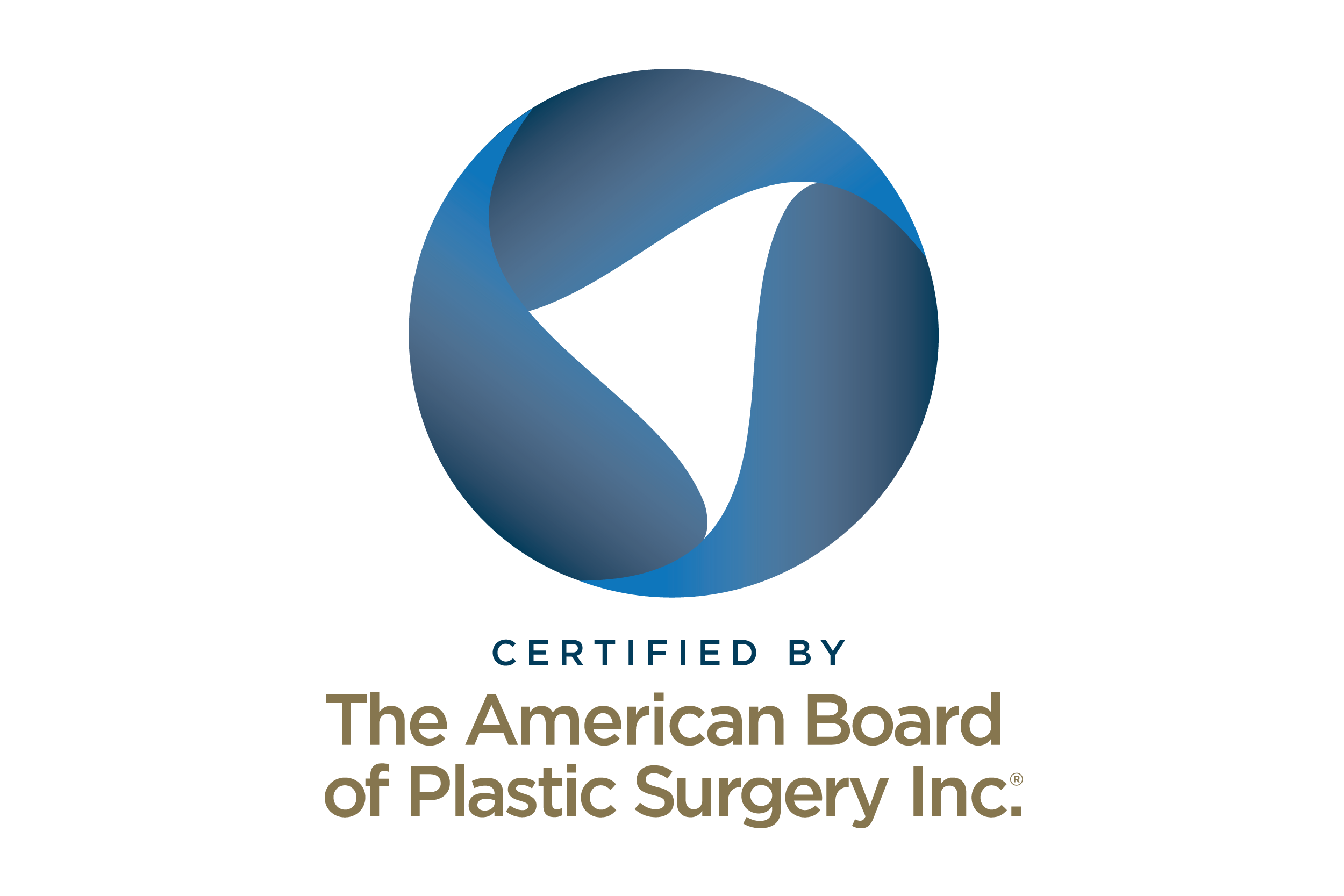Facelift
A Facelift (Rhytidectomy) is a surgical procedure designed to smooth and firm the skin, providing a fresh, youthful appearance. Throughout one’s life, the sun’s radiation, stress, gravity, and other factors cause the skin to sag and fit more loosely. Areas of the face and neck, in particular around the jaw line, are especially prone to the aging process. Though these changes are gradual, wrinkles and other signs of aging can make individuals “feel older” than they really are.
Surgery for a facelift involves the contraction and realignment of facial and neck skin, and in some instances the removal of excess fat deposits. A facelift is often performed in combination with other facial cosmetic procedures and can be performed any time signs of aging begin to appear. However, patients are generally in their forties or older when they elect to undergo this procedure.
Reasons for Considering a Facelift
-
Sagging skin, muscles, and fat in the face and neck.
-
Excess skin and fat on the neck.
-
Sagging jaw line.
-
Crease lines along the nose, mouth, and chin.
General Procedure
The standard procedure for a facelift commonly involves making small incisions just inside the hairline, following the contour in front of the ear, and continuing under the earlobe to the backside of the ear and to the lower scalp. Tissue and fat deposits are separated, the skin is stretched and tightened, and any excess skin is removed. If the neck line requires attention, an additional incision is made under the chin and the same procedure is again followed. Minuscule stitches are used to close the incisions and to reduce any chance of scarring. Metal clips or staples may also be utilized at the hairline.
A face lift may take several hours or longer depending on whether other cosmetic procedures are completed at the same time. Sometimes other procedures may be performed in separate appointments. There are several different facelift techniques that can be employed. Patients can discuss with their physician which method is best for them when they come in for their consultation.
Recovery Process
Immediately after surgery, the face is fitted with bandages in order to decrease the recovery time and to reduce swelling. Generally, post-operative instructions call for plenty of rest and limited movement in order to speed up the healing and recovery process. The stitches, clips or staples are normally removed within a week. Patients sometimes report some minor pain associated with surgery. Any discomfort can be treated effectively with oral medication. While complications are rare, patients can minimize potential problems by carefully following the directions given after the procedure.
Chin and Cheek Implants
High cheekbones and a strong jaw line have long had a history of allure. Along with the eyes, the cheekbones and jaw line form the most photogenic aspects of the face. Chin and cheek implants are a great way to enhance a facial profile by improving the overall proportion and balance of the face. With chin implants (mentoplasty), the symmetry of the face can be shaped and contoured. Cheek implants (malarplasty), also known as malar (high cheek) or submalar (low cheek) augmentation, can add fullness and definition to the face. Utilizing permanent chin and cheek implants can provide a rejuvenated, youthful facial profile.
Reasons for Considering a Chin and/or Cheek Implant
-
Extend or enlarge the chin if the chin is recessed or small.
-
Create a more defined facial profile if the jaw, chin, or cheeks lack distinction.
-
Bring the various aspects of the face into proportion.
-
Round out the cheeks if they are hollow due to heredity or aging.
-
Accent the upper cheeks making them appear higher and fuller.
General Procedure
With chin surgery, an implant is inserted in front of the jawbone in order to augment the chin or jaw. A small incision is made inside the mouth to allow the implant to be positioned in a pocket just under the skin. An alternate location for this incision is below the chin (on the outside). Chin surgery is commonly performed along with rhinoplasty (nose surgery). With cheek augmentation, incisions are made either inside the mouth, through the lower cheek, or directly below the bottom eyelid on the high cheek. Cheek surgery is often performed in conjunction with a facelift procedure. Both chin and cheek implant procedures normally last from 30 minutes to one hour.
Recovery Process
Immediately after surgery, the face will be fitted with bandages, taped, or otherwise secured in order to speed the recovery process and to reduce swelling. Generally, post-operative instructions call for plenty of rest and limited movement in order to speed up the healing process and recovery time. Keeping the head elevated during the initial recovery phase is also important. Patients sometimes report minor pain associated with surgery. Any pain can be treated effectively with oral medication. Patients may experience some swelling and bruising of the face which can be eased by using cold compresses. A liquid diet may be required for a few days, as chewing may be difficult. While complications are rare, patients can minimize potential problems by carefully following the post-operative directions given after surgery. The substance used for chin and cheek implants is made of durable, solid material that will last for years.
Ear Surgery
Surgery of the ear, also known as otoplasty, is a procedure that helps reduce protrusion of the ear away from the head. Most often, ear surgery is performed on children between the ages of four to fourteen. Ears that “stick out” are often the source of teasing and ridicule in young children. This teasing can have a devastating effect on the child’s psyche.
Otoplasty is not limited to children and may also be performed on older patients. Cosmetic procedures are available for those individuals with large ears and for those with congenital (birth) irregularities that detract from their appearance. Additionally, an individual’s ears may exhibit abnormal traits due to their genetic make-up or an accidental injury, such as losing an ear or part of an ear. Otoplasty is used successfully for each of these situations. Regardless of the procedure, patients have been pleased with the long-lasting improvements to their appearance offered by ear surgery.
Reasons for Considering Ear Surgery
-
Bring proportion to the face if the ears “stick out” too much.
-
Correct folded ear tips (lop ear).
-
Reshape long or offset earlobes.
-
Enhance very small ears or other congenital defects.
-
Remedy an accidental injury, including the loss of an ear.
General Procedure
Ear surgery is commonly performed under general anesthesia for children and local anesthesia for adults. The standard otoplasty procedure brings the ears closer to the head. Otoplasty begins with an incision hidden in the crease behind the ear. This incision allows the cartilage located behind the ears to be reshaped in order to position them closer to the head. The procedure takes approximately one to two hours, depending upon the extent of surgery.
There are various surgical techniques involved in correcting irregularities other than protruding ears. These techniques can be discussed with your physician during the initial consultation.
Recovery Process
After the surgery is completed, large bandages will be wrapped around the head. This method secures the ear in place and assists with the healing process. The bandages are usually removed within a week and replaced with smaller dressings. Generally, post-operative instructions call for plenty of rest and limited movement in order to speed up the healing process and reduce the recovery time. Patients sometimes report minor pain associated with surgery. Any pain can be treated effectively with oral medication. While complications are rare, patients can minimize potential problems by carefully following the post-operative directions.
Eyelid Surgery
Eyelid surgery (known as blepharoplasty) is a corrective procedure that can reduce dark circles or “bags” under the eyes, remove excess wrinkles, and provide a more youthful appearance to the eyes. One of the first things noticed about a person is their eyes. During the aging process, wrinkles, lines, and puffiness contribute to a tired or aged appearance. The blepharoplasty surgery is often performed in conjunction with other facial procedures such as a face lift or rhinoplasty (nose surgery).
Reasons for Considering Eyelid Surgery
-
Dark circles or bags under the eyes.
-
Excessive skin or wrinkles surrounding the eyelids.
-
A tired appearance or puffiness due to inherited factors.
General Procedure
The surgical procedure includes tiny incisions made in the natural contours around the eyes which should leave no visible scarring. The surgeon will usually work on the upper eyelids first to remove any fatty tissue and tighten loose skin. Lower eyelids are completed next to eliminate puffiness and reduce dark circles. In some instances, laser technology may be used to smooth lower eyelid areas. Newer techniques may include Botox injections to firm fine lines and wrinkles.
The surgery generally takes about one to three hours and is performed in the physician’s office. If additional cosmetic procedures are being performed, the eyelid surgery could last longer.
Recovery Process
Normally, post-operative instructions call for plenty of rest and limited movement in order to speed up the healing process and reduce the recovery time. Patients sometimes report minor pain associated with surgery which can be treated with oral medication. While complications are rare, patients can minimize the risk for potential problems by carefully following the post-operative directions given after the surgery. The healing process for this procedure is slightly longer than most other forms of cosmetic surgery; however, the benefits are long-lasting. Patients will have a more rested and youthful appearance.
Nose Surgery
Nose surgery (Rhinoplasty) is a procedure to reshape the nose in order to create a more pleasing look and, in some instances, to correct severe breathing problems. With approximately 400,000 operations performed each year, rhinoplasty is considered the most popular cosmetic procedure in the United States. Rhinoplasty usually involves reducing the size of the nose by removing and sculpting the nasal tissues in order to enhance the facial appearance. The results are unique to each individual, and depend upon such factors as skin condition and thickness, nasal and facial structure, genetic contributions, and age. Traditionally, a “nose job” was performed only to correct major problems. However, recent surgical innovations allow for individuals to benefit from more moderate improvements from the procedure as well. In general, having nose surgery provides the patient with a better facial balance and overall appearance.
Reasons for Considering Nose Surgery
-
Bring a better proportion to the nose and facial features.
-
Reduce the size of the nose that is too large or too wide.
-
Correct an overly arched or “Roman” nose.
-
Re-form a crooked or elongated nose tip.
-
Restore the nose if damaged from an accident or sports injury.
-
Help with breathing problems by rebuilding the nasal passage.
-
Treat nasal deformities caused at birth.





